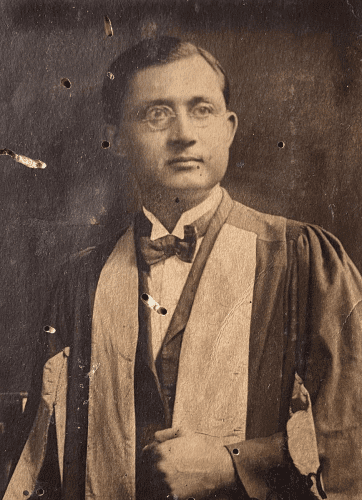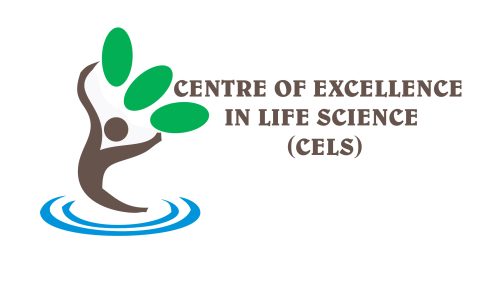S.R. Khastgir – A Pioneer of Radio Physics and Atmospherics in India
Hardev Singh Virk
Professor of Eminence, SGGS World University, Fatehgarh Sahib, Punjab, India
Abstract
This monograph is dedicated to SR Khastgir (SRK), who was a pioneer of Radio Physics and Atmospheric Science in India. He worked on X-ray spectroscopy at University of Edinburg under the supervision of CG Barkla, a Nobel Laureate. At Dacca university, he designed parabolic wire reflectors, receivers, and antennas. SRK investigated the dielectric constants of chlorine, iodine, and thallium vapours for different ionic concentration, and for a definite range of ultra-short wavelengths. The most important work of SRK was the measuring the heights of E- and F-layers in Eastern Bengal. He continued his research in ionosphere and atmospheric studies at Calcutta University. SRK wrote books in Bengali for teaching of science and fabricated his own instruments for research.
Author for Correspondence E-mail: [email protected]
INTRODUCTION
Satis Ranjan Khastgir (SRK) (1898-1973) – a pioneer of radio science and atmospherics, was contemporary of renowned Indian physicists like C.V. Raman, M.N. Saha, and S.N. Bose. This monograph [1] is dedicated to research work of SRK, who introduced the teaching and research of Radio Physics and Atmospheric Science in India. SRK worked on X-ray spectroscopy under the supervision of CG Barkla, a Nobel Laureate, and wrote his DSc thesis on “Scattering coefficient and its relationship with wavelength”. The purpose of this review is to highlight the contributions of SRK to development of Radio Physics, Ionospheric Studies, and Atmospheric Science in India. SRK started his teaching career at Dacca university, then he moved to BHU Varanasi and guided research in Radio Physics. Finally, he joined as Khaira Professor at Calcutta University and introduced Radio Physics as a special subject at M.Sc. level.
The author of this book, Rajinder Singh, is a well-established historian of Indian Science who has already published 42 books on the life and work of Indian scientists, starting with CV Raman, the Nobel Laureate [2]. Rajinder Singh is associated with Research Group: Physics Education and Public Understanding of Science, Physics Institute, University of Oldenburg, Oldenburg, Germany. Author is a science teacher, physicist, and historian of science and technology [3].
BOOK DETAILS



Title of Book: S.R. Khastgir – A Pioneer of Radio Physics and Atmospherics
Author: Rajinder Singh, University of Oldenburg, Germany
Publisher: Shaker Publisher, Düren, Germany. 2022; pp. xiv+206. Price: 21.90 Euro. ISBN 978-3-8440-8772-7.
The book gives a brief introduction to early life of SRK in Chapter 1. He was born on Sept. 5, 1898, in Chittagong (now in Bangladesh). His father Satya Ranjan Khastgir was an Engineer. Khastgirs were a respectable family in Chittagong. A school by the name Khastgir Girls School was established in Chittagong in the nineteenth century. He was a brilliant student who passed all his examinations in first division.
For higher studies, he joined the Presidency College Calcutta and passed BSc in first division. He passed his M.Sc. in Physics from Calcutta university in 1921 and soon after moved to Edinburg (UK) for higher studies and research. SRK stayed at the University of Edinburgh from 1922 to 1926. There he worked on X-ray spectroscopy and wrote theses to obtain PhD and DSc in four years working under the supervision of CG Barkla, a Nobel Laureate. On return to India, SRK served at Dacca University but after partition of India in 1947, he migrated from Dacca to BHU Varanasi. He retired in 1963 after serving as Khaira Professor at Calcutta University.
RESEARCH CONTRIBUTIONS OF SRK
SRK joined as Reader in Physics Department, University of Dacca (now Dhaka) in 1931, where SN Bose, famous for Bose-Einstein Statistics, was head of Physics department. At Dacca, SRK worked on X ray-spectroscopy, or rather, J phenomenon discovered by CG Barkla, for a short while. His contact with S.K. Mitra, another expert in Radio Physics at Calcutta, led him to define his new research programme in the field of ionospheric and radio sciences in India. He left Dacca in 1947 during Partition of India and joined BHU, Varanasi in 1948. In 1958, he left Banaras to join University of Calcutta as Khaira Professor Chair, Physics Department. He retained this post until his retirement in 1963. Like SN Bose and CV Raman, SRK was promoting teaching of Science in Bengali. It will be of interest to note that in 1944, SRK wrote his scientific book ‘Wireless’ in Bengali.
Chapter 2 of the book highlights the controversy between CG Barkla and AH Compton, the two Nobel Laureates in Physics: “A.H. Compton supported the change of wavelength in scattered radiation, whereas C.G. Barkla was convinced of a new series of characteristic radiation. They were named by C.G. Barkla as the J-series because the radiation of this new series was of shorter wavelength than the K-radiation emitted by the same elements”. Barkla’s results became questionable after the discovery of the Compton effect [4]. J-phenomenon was proposed by Barkla for scattering of X-rays assuming Thomson theory of scattering. SRK attempted to support the ideas of his teacher, C.G. Barkla. He was only partially successful. He confessed [5]:
(i) It is impossible to tell the factors which control the J phenomenon.
(ii) The J-discontinuity was not reproduceable.
(iii) “The discontinuity appeared and disappeared before our eyes although we could not detect any difference in the conditions.”
SRK tried to wriggle out of the controversy by his experiments, but he remained undecided to reject the findings of his mentor, CG Barkla. The crux of the problem lies in the use of classical theory of JJ Thomson by Barkla for scattering of X-rays while Compton effect is explained by quantum nature of X-rays. SRK was afraid to annoy his research supervisor by refuting his wrong discovery of J-phenomenon.
Chapter 3 of book is devoted to research work carried out by SRK in university of Dacca in his newly created Wireless laboratory. A clear distinction was made between ionospheric and radio sciences by SRK: “The field of ionospheric science belong to the dielectric properties of materials, sea water and electron transit-time effects in tubes at very high frequency (VHF), vacuum tubes, rectifier tubes etc. The electromagnetic fields and waves, electronic- and optical devices, electromagnetic noise, remote sensing, wave propagation through the troposphere and ionosphere, plasma, radio astronomy, and bio-electromagnetics belong to radio science”. The radio spectrum is well defined in various ranges such as very low frequency (VLF), middle frequency (MF), very high frequency (VHF) and ultra-high frequency (UHF). The most important work of SRK was the measuring the heights of E- and F-layers in Eastern Bengal.
Chapter 4 describes SRK’s research activity in Banaras Hindu University (BHU) which he joined in 1948. In Banaras, SRK and Asit Sen used a cathode-ray tube as direction-finder “to find exactly the manner in which the intensity of the received atmospherics varied with the frequency to which the receiver was tuned”. This enabled them to determine the intensity of individual atmospheric pulses. The research work carried out at BHU may be classified as follows: “Investigation of the waveforms of atmospherics, abnormal polarization of atmospherics, a new type of M0-echo from the atmosphere, study of F-layer, beat theory of fading of short-wave radio signals, and radio signal disturbances due to clouds”.
Chapter 5 covers the research work of SRK at university of Calcutta. In 1958, S.N. Bose was appointed as Vice Chancellor of the Visva Bharati. He resigned from the University of Calcutta and SRK was appointed as Khaira Professor in his place. He continued his research in ionosphere and atmospheric studies on “Winds in the F-region, Waveforms of atmospherics at daytime, Polarization of radio wave in the ionosphere, auto-correlation coefficient of singly and multiple reflected radio waves, electric field variations during cloud- to- cloud discharges and making of the fluxmeter and study of thunder clouds”.
After retirement, SRK continued his research at Bose Institute, Kolkata under a CSIR project. His investigations were extended to study: “The magnetic control of the lower ionospheric absorption at lower latitudes, Intra-cloud discharges and their electric field changes, the distribution of the amplitude of vertical radio pulses returned from the ionosphere, Polarization parameters of the radio-waves, and Refractive index and absorption index for the propagation of radio waves”.
Chapter 7 analyses the impact of SRK’s research on science and society of India. Analysis of SRK’s publications shows that he worked with 50 persons. Out of them C.G. Barkla and W.H. Wilson were from the UK. From India, S.N. Bose is his most prominent associate from the days he joined Dacca university in 1931. In all, 19 students obtained their Ph.Ds. under his supervision in Dacca, BHU and Calcutta universities.
SR Khastgir was a prolific writer and he published more than 160 research papers in high impact journals. He authored 5 books, 3 in Bengali, namely, Betar (Wireless), Bijnaner Swarup (Nature of Science), and Bidyut-pal Sambandhey Baijnaik Gabesana. Both Bose and Khastgir believed that science should be taught in the mother tongue. Despite his prominent contributions to scientific research in an important area, he has been ignored in academic circles. I congratulate the author, Rajinder Singh, for bringing out this volume in celebration of his life and work.
CONCLUSIONS
CONCLUSIONS
- Rajinder Singh has brought into limelight and public view a lesser known but a pioneer of Radio Physics and Atmospheric Science in India.
- SRK faced the predicament of supporting his mentor, CG Barkla, willy-nilly despite contradictions in Barkla’s approach to scattering of X-rays. He refuted his mentor’s work only after return to India.
- Publication of Barkla’s controversial papers in renowned journals like Philosophical Magazine and Nature leaves no doubt that this was possible due to his status as a ‘Nobel Laureate’.
- Ionospheric studies carried out by SRK have applications in telecommunications, navigation, and space science.
- SRK wrote popular science books in Bengali and was in favour of teaching Science in the mother tongue.
REFERENCES
- https://www.shaker.de/de/content/catalogue/index.asp?lang=de&ID=8&ISBN=978-3-8440-8772-7&search=yes
- Publications: https://rajindersinghdr.hpage.com/
- Rajinder Singh – A Physicist, Teacher, and Historian of Science. Omni Science: A Multi-disciplinary Journal. 2023; 13(2): 12–17p.
- Compton A.H., A quantum theory of x-rays scattering by light elements. Phys. Rev. 1923; 21: 483-502p.
- Khastgir S.R. Ph.D. thesis, University of Edinburg, 1924: pp. 13-21.




